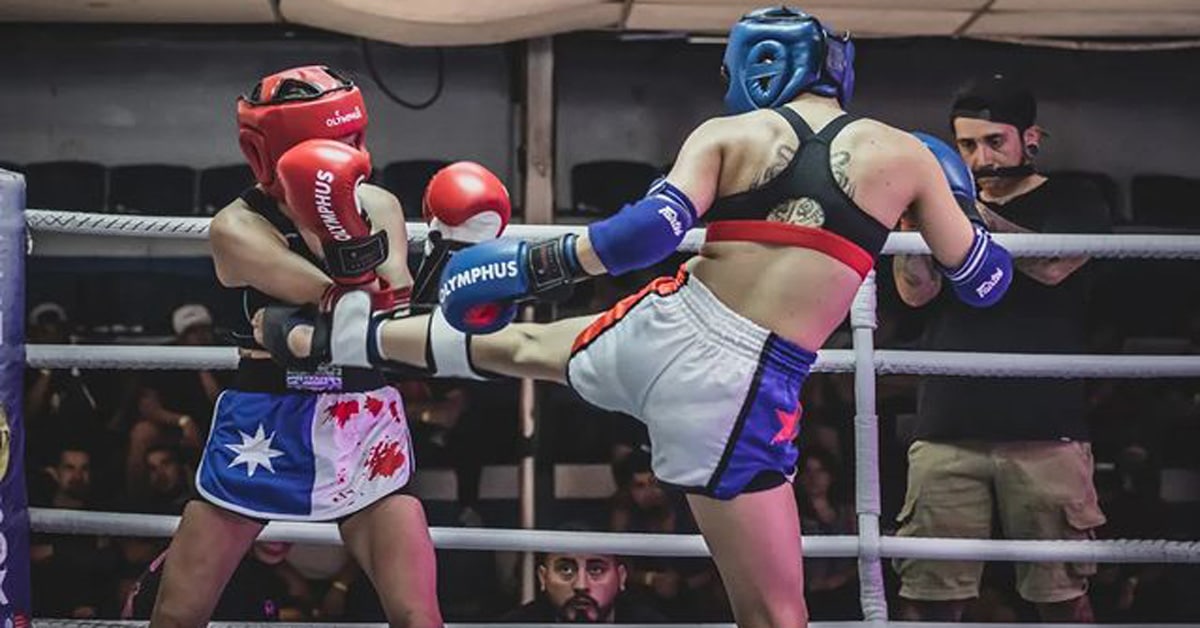Muay Thai Rules: What Are They?
What Are Muay Thai Rules? Step into the vibrant world of Muay Thai, a mesmerizing sport and martial art that hails from the enchanting land of Thailand. Prepare to be captivated by the graceful dance of punches, kicks, knees, and elbows, all elegantly woven together in a symphony of combat. Behold the majestic ‘Art of Eight Limbs,’ a name that aptly captures the awe-inspiring spectacle that is Muay Thai.
Muay Thai’s roots run deep, tracing back through the annals of time, where it intertwines with the rich tapestry of cultural and religious traditions. In the heartland of Thailand, Muay Thai has transcended boundaries, becoming an integral part of life for all who dwell there. From brave boys to fearless girls, even revered kings and queens have immersed themselves in the artistry and discipline of Muay Thai.
A Quick History on Muay Thai Rules
In the 1930s, the rules of Muay Thai were formalized. Everything prior to that era became known as Muay Boran. At the forefront of this incredible transformation stood none other than the visionary figure of King Rama VII, an icon whose passion and dedication would shape the destiny of Muay Thai. With the stroke of his regal hand, King Rama VII introduced revolutionary elements to the sport—gloves, rings, rounds, and precise Muay Thai rules.
These visionary regulations not only breathed life into a new era of Muay Thai but also paved the way for its triumphant ascent in the decades that followed. With a solid foundation of rules and structure, Muay Thai would continue to captivate hearts, inspire warriors, and etch its name in the annals of combat history.
How to Win in Muay Thai
In Muay Thai, a nak Muay can win a bout three ways:
- Knockout
- Technical Knockout (TKO)
- Judges Decision
A knockout can be from a punch, kick, elbow, or knee strike. If a fighter falls to mat an does not rise to their feet before the referee’s count, then the match will be waived off as a knockout. If a fighter is looky shaky while on their feet, the referee has the option to stop the match. This is referred to as a technical knockout. If both fighters reach the final bell, then a victor is chosen by the judges.
Muay Thai Equipment
For a Muay Thai match to occur certain equipment needs will need to be met. The organization will require a ring with ropes, and stools for the cornermen. Enter the sacred battleground, known as the ring—a hallowed space designed specifically for the ultimate clash of champions. It’s a place where greatness is forged, where legends are born. Let’s take a closer look at this arena of destiny.
The dimensions of the ring are carefully measured, ensuring a fair and challenging stage for the fighters. For smaller-sized rings, they stretch out to a square of 6.10 x 6.10 meters, while larger rings expand to an impressive 7.30 x 7.30 meters. These measurements are taken from the inner edge of the sturdy ring ropes that surround the battlefield.
Fighters will need hand wraps, gloves, shorts, mouthguard, and a cup. There are standard measurements for fight gloves under Muay Thai rules and it is based on weight classes. Mini Flyweight division and the Featherweight division, the warriors must don gloves weighing a nimble six (6) ounces (132 grams). Super Featherweight division to the Welterweight division. Here, the fighters don gloves that tip the scales at a slightly heavier eight (8) ounces (227 grams). As we enter the Super Welterweight division and beyond, the warriors don gloves weighing a sturdy ten (10) ounces (284 grams).
For hand wraps, in official Muay Thai rules, they can be no longer than six meters and no wider than five centimetres. Most hand wraps in fights will be supplied by the promoter.

Weight Classes in Muay Thai
Under Muay Thai rules, there is not a standardized set of weight classes. Each organization has its own measurements for weight classes. For a large overview of Muay Thai weight classes, see here.
Muay Thai Round Times
For title bouts in professional Muay Thai, it consists of five rounds, each lasting a fierce three minutes. That’s a total of fifteen minutes of non-stop action, where every second counts. Following each round, a two minute rest period allows the fighters to catch their breath, strategize, and prepare for the grueling rounds ahead. For non title bouts, under official Muay Thai rules, a fight will last three rounds by three minutes.
For the formidable female fighters, the format is just as thrilling. Their world championship battles consist of five rounds, but with a twist. Each round spans two intense minutes, bringing the total fight time to a compact and explosive ten minutes. And just like their male counterparts, they too enjoy a two minute rest period between rounds, a precious window to recharge and recalibrate.
What goes against Muay Thai rules?
Under Muay Thai rules you are permitted to punch, kick, knee, elbow, and clinch. So goes against Muay Thai rules? First and foremost, we have a list of actions that go against the very essence of honorable combat. Biting, eye-poking, spitting on the opponent, and striking the groin are all absolutely prohibited. These actions are not only dangerous but also disrespectful, tarnishing the spirit of sportsmanship that Muay Thai upholds.
Furthermore, we must avoid any form of back-breaking, Judo throws, or wrestling techniques. While these maneuvers may be effective in other martial arts disciplines, in Muay Thai, they are considered outside the boundaries of fair play and are strictly disallowed.
Another action that falls under the category of rule violations is intentional rope grabbing. Using the ropes to gain an unfair advantage over an opponent is considered unsportsmanlike and goes against the principles of honorable combat.
Using provocative manners and words during a contest is strictly prohibited. Muay Thai encourages a spirit of dignity and respect between competitors, promoting a fair and harmonious environment within the ring.
The referee plays a vital role in ensuring a fair fight. Disobeying their orders is a serious offense. It’s essential to adhere to the referee’s instructions and maintain proper conduct throughout the match.
Under Muay Thai rules, striking the opponent’s protective cup with a any limb is strictly against the rules. The groin area is highly sensitive and vulnerable, and targeting it intentionally is not permitted in the realm of honorable combat.
Another vital rule is that a fighter can never strike to the back of the head of their opponent. his region is particularly vulnerable due to the positioning of vital structures such as the brainstem and the cervical spine. Striking this area with force can pose significant risks to the health and safety of the Nak Muay.
If a fighter catches a kick, they can take a maximum of two steps forward and throw a counter. Three steps or more is a violation of Muay Thai rules. Plus, if a fighter gets swept or tripped to the mat, a fighter cannot strike them when they are on the ground.

Muay Thai Respect
Respect and honor must be shown before, during, and after the bout. Fighters will wear traditional Buddhist clothing, the Mongkon and Pra Jiad, before a fight, including foreign fighters. Before the match begins, a Buddhist dance takes place which is named the Wai Kru.
According to Muay Thai Rules. Nak Muays must also shake hands before the beginning of the fight, before te last round begins, and again at the end of the match. Displays of spirit and sportsmanship are vital to the health of the Muay Thai sport.
Conclusion on Muay Thai Rules
From the rhythmic dance of strikes to the electrifying energy of the ring, every aspect of this enchanting martial art embodies respect, skill, and unwavering sportsmanship. The legendary King Rama VII himself left an indelible mark on the sport, introducing gloves, rings, and precise rules that elevated Muay Thai to new heights.
In the arena of Muay Thai, victory can be achieved through three paths. A thunderous knockout, delivered by a devastating punch, kick, elbow, or knee strike, can bring a swift end to the contest. If a fighter is unable to rise to their feet before the referee’s count or appears too shaky to continue, a technical knockout is declared. And when both warriors endure the battle until the final bell, the judges have the honor of determining the victor based on their performance.
However, within the world of Muay Thai rules, there are lines that must never be crossed. Actions such as biting, eye-poking, spitting, and striking the groin are strictly forbidden, as they not only endanger the safety of the fighters but also betray the core principles of respect and honor. Back-breaking, Judo throws, and wrestling techniques have no place in the art of eight limbs, as they deviate from the graceful and skillful nature of Muay Thai.
The Muay Thai rules also prohibit intentional rope grabbing, using provocative manners and words, disobeying the referee’s orders, and striking the opponent’s protective cup with any limb. Each of these infractions undermines the integrity of the sport and disrespects the warriors who engage in battle.
In Muay Thai, the pursuit of victory goes hand in hand with the pursuit of excellence in character. It is a sport that celebrates skill, honor, and camaraderie, where warriors engage in combat not only with their physical prowess but also with the utmost respect for their opponents and the rules that govern their art.

